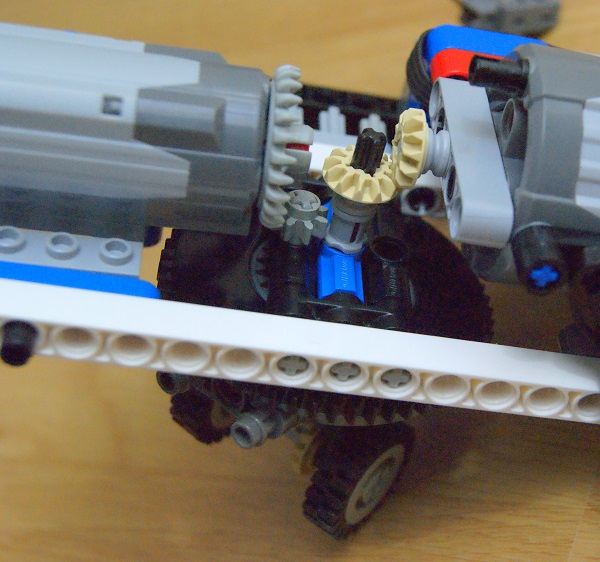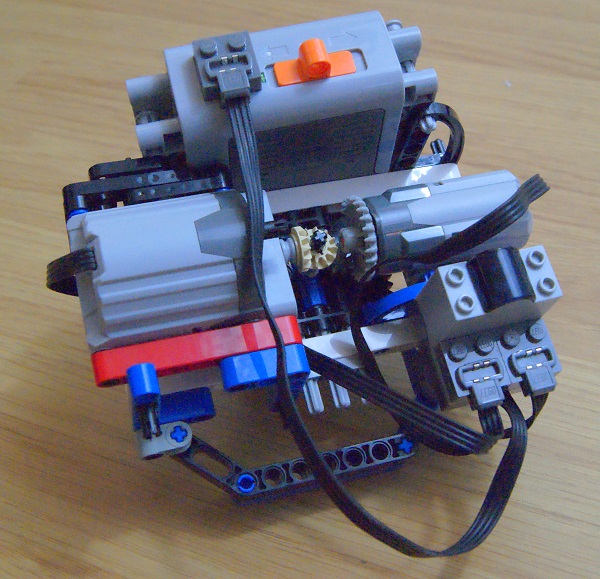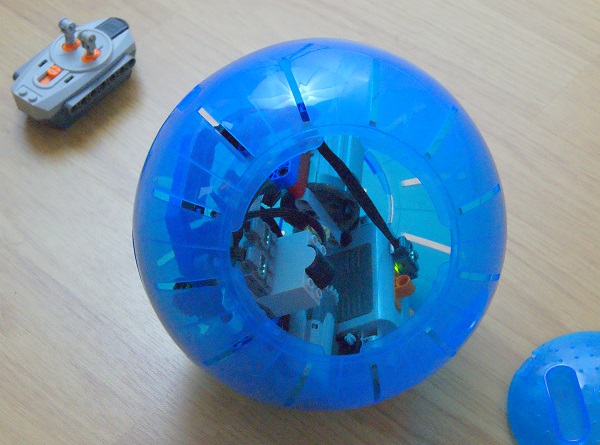Ever since the first trailer appeared for Star Wars Episode VII, the world fell in love with BB8. I could just buy a non-Lego version, but I would like to see if it is possible to create a working BB8 in LEGO Technic. There is only one way to do this – trial and error. Rupert Cross, I dedicate this post to you.
WARNING – LEGO purists beware that this blog-post contains non-LEGO parts. If that sort of thing offends you, look away now. Also I offer an apology to Technic guru Sariel: please do not show this video to your hamster.
First attempt – 2nd January 2016.
The first mechanism I tried has a pair of wheels at the bottom which can rotate and drive. The tan-coloured gears make the wheels drive. The grey gears (crown and pinion) are used to rotate the driving plate – making it possible to steer the driving wheels in any direction.
The two motors are attached to the “Power Functions” remote control and battery, and these are mounted as shown.
Turning the thing over, we have a mechanism that can steer and drive independently. Watch the video to see it in action. Remember, this is the underneath – so those wheels should be on the ground.
The structure is then housed inside a hamster-ball. LEGO don’t make a sphere big enough for this project, so I had to improvise. FULL DISCLOSURE: No animals were hurt in the making of this project.
Immediately I can see a problem. The battery is so heavy that it skews the whole thing over to one side. So far in fact that the wheel is barely in contact with the inside of the ball. Let’s see it in action.
At the beginning of the video, at the bottom of the ball, you can see the wheel steering. Then it tries to drive … and the whole structure unbalances. With insufficient traction, the hamster ball is just able to wobble.
Rupert, this is how one becomes an expert builder: trial and error. Don’t be scared to make lots of mistakes. As you can see, this one was a bit of a disaster. But we learned some valuable lessons:
- The LEGO Power Functions battery box is heavy,
- The mechanism must be well balanced,
- The co-axial drive mechanism works – and might be useful for something else.
Back to the drawing board I’m afraid. I have some more ideas … so watch this space. In the meantime, I found a guy in Hungary (in Hungarian – or auto-translated into English) who came up with a mechanism last April. I don’t know if he ever completed his version. If that’s you, please add your comments below.


